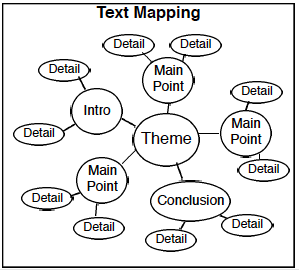These texts were created specifically for interpreting practice, based on comments from educational interpreters that one of the great challenges they faced in preparing for national Interpreter Certification was that they rarely had the opportunity to see Deaf adults signing–and to exercise their interpretation skills going from ASL to English. These are not rehearsed texts and that is an intentional decision. Within them, there will be errors, digressions, and repairs–elements of ASL discourse that is all too often missing from materials produced for interpreting practice, but which is definitely a part of the interpreting experience when working with actual people. So, as you approach this work, don’t expect perfect, polished texts, but more natural language examples.
1. Do text analysis.
After each of the text’s description, there is a timecode listing how long the text is. Choose a shorter one and analyze it for meaning, structure, and different linguistic features. One helpful tool can be mapping out the main points and details in a format similar to figure at right.
2. Shadow and re-tell the texts.
In shadowing, while the movie is playing, attempt to copy as closely as possible the text. In the beginning, you may want to focus only on one feature; for example, facial expression or body movement. Eventually, try to copy as much of the text as you can. In re-telling, watch the entire text,and then try to re-tell it as closely as possibly, focusing on including the meaning and feeling of the text, rather than the individual signs used.
3. Do consecutive interpreting.
After analyzing the structure of the text, pause the movie after each main point. And do a consecutive interpretation. This may be easier to do in pairs and have one person use the mouse for pausing, and the other focus on the interpretation. To pause, simply click on the play/pause but-ton on the left hand side of the control bar at the bottom of the movie.
4. Do simultaneous interpreting.
Interpret them as you would have to in an interpreting situation. The important thing is to recognize that you have other options for practice,and you can work up to the actual simultaneous interpretation stage. As well, because there are 17 separate texts on this resource, you can choose from this “grab bag” to be able to work with a variety of situations in many different ways.
These strategies are only suggestions and there are certainly more things that can be done with them. It is the Region III – Low Incidence Project’s hope that you will find these to be useful tools in your work of skill development.
Posted in: This 'n' That
